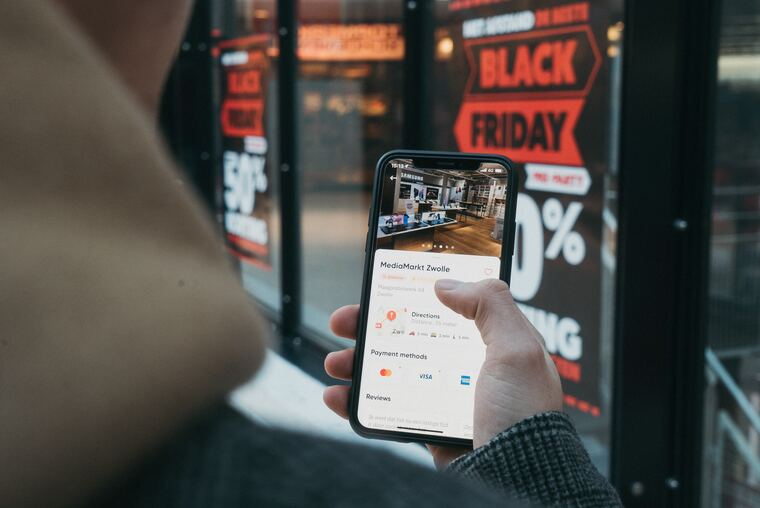Welcome to the digital age, where having a strong online presence is crucial for small businesses. In today's competitive market, a online store can make all the difference between success and obscurity. But web design can be intimidating for those unfamiliar with its intricacies. Don't worry though in this blog post, we'll guide you through the process of creating an effective website that will help your small business thrive.
Whether you're just starting out or looking to revamp your existing site, understanding the basics of web design is essential. From choosing the right platform to incorporating branding and marketing strategies, we'll cover it all. Plus, we'll delve into search engine optimization (SEO) techniques and explain why mobile responsiveness is non-negotiable in today's mobile-centric world.
So if you're ready to take your small business to new heights with a killer website design, let's dive right in! Whether youre looking for inspiration or practical tips on how to optimize your site for success, this article has got you covered. Get ready to transform your online presence from mediocre to magnificent!

Importance of a Professional Website for Small Businesses
In today's digital landscape, a professional website is more than just a virtual storefront for small businesses. It's a powerful tool that can enhance brand credibility, attract new customers, and drive sales. Having an effective online presence is no longer optional - it's essential for survival in the competitive market.
First impressions matter, and your website serves as the face of your business in the online world. A well-designed and visually appealing site immediately establishes trust with target customers. It showcases professionalism and attention to detail, reflecting positively on your brand.
But it's not just about aesthetics, functionality plays a crucial role too. A user-friendly website ensures that visitors can easily navigate through your content and find what they're looking for without frustration or confusion. By providing a seamless browsing experience, you increase the chances of converting casual visitors into paying customers.
Having a professional website gives small businesses an opportunity to showcase their unique value proposition and stand out from competitors. With carefully crafted content that highlights your products or services' benefits, you can effectively communicate why potential customers should choose you over others in the market.
Investing in web design allows you to incorporate branding elements consistently throughout your site. From color schemes to logos and taglines all these components work together cohesively to reinforce brand recognition among users. This consistency helps build trust and creates memorable experiences for visitors.
A professionally designed website also enables small businesses to implement marketing strategies seamlessly. Whether it be integrating email subscription forms or promoting social media channels directly on-site, these features help expand reach beyond traditional marketing efforts while fostering customer engagement.
Lastly but certainly not least important: search engine optimization (SEO). An optimized website increases visibility in search engine results pages (SERPs), making it easier for potential customers to find you organically when searching online for related products or services within their locale.

Understanding the Basics of Web Design
When it comes to website's design, there are a few fundamental concepts that every small business owner should grasp. First and foremost, your website should be visually appealing and easy to navigate. This means using clean layouts, legible fonts, and high-quality images.
Your website should have a clear purpose. Are you trying to sell products? Provide information about your services? Capture leads? Whatever it may be, make sure that the design of your site aligns with your goals.
Another important aspect of web design is ensuring that your site loads quickly on all devices. With more people accessing websites from their smartphones and tablets, mobile responsiveness has become crucial. Make sure that your website looks great and functions properly on both desktop computers and mobile devices.
Don't forget about the importance of user experience (UX). Your visitors should be able to easily find what they're looking for without getting frustrated. This means organizing content in a logical manner and including intuitive navigation menus.
Don't underestimate the power of incorporating branding into your web design. Your website should reflect the personality and values of your brand through color schemes, imagery choices, and overall aesthetics.
By understanding these basic principles technical skills of web design, you'll be well-equipped to create a professional-looking website for your small business!

Choosing the Right Platform for Your Business
Choosing the right platform for your small business website is crucial in ensuring its success. With numerous options available, it's important to consider factors such as functionality, customization, and ease of use.
One popular option is WordPress, a versatile content management system (CMS) that offers a wide range of themes and plugins. It allows you to easily update and manage your website without extensive coding knowledge. Shopify is an excellent choice for online stores, offering robust ecommerce features.
Consider the specific needs of your business when making a decision. If you require advanced features or have complex requirements, platforms like Joomla or Drupal may be more suitable. Squarespace offers beautifully designed templates perfect for creative businesses.

Tips for Creating a User-Friendly and Effective Website
When it comes to creating a user-friendly and effective website for your small business, there are several key tips to keep in mind. First and foremost, simplicity is key. Keep your design clean and uncluttered, with clear navigation menus and easy-to-find information.
Next, make sure your website is mobile-responsive. With more people accessing the internet on their smartphones and tablets than ever before, it's crucial that your site looks great and functions properly on all devices.
Another important tip is to optimize your website for speed. Slow-loading pages can lead to frustrated users who may leave before even getting a chance to see what you have to offer. Compressing images, minifying code, and using caching techniques can help improve loading times.
In terms of content, remember that less is often more. Keep paragraphs short and concise, using headings and bullet points where appropriate to break up text. Use high-quality images that are relevant to your business or industry.
Incorporate keywords naturally into your content so that search engines can easily understand what your website is about. This will help improve visibility in search engine results pages.
By following these tips for creating a user-friendly and effective website design for business websites, you'll be well on your way to attracting visitors and converting them into customers!

Incorporating Branding and Marketing into Your Website Design
When it comes to building a website for your small business, it's important to remember that your website is an extension of your brand. It should reflect the personality, values, and unique selling points of your business. This means incorporating branding elements such as your logo, color scheme, and overall visual identity into the design of your website.
To effectively market your small business online, you need to strategically place calls-to-action (CTAs) throughout your website. These CTAs can be in the form of buttons or banners that encourage visitors to take specific actions like signing up for a newsletter, making a purchase, or contacting you for more information.
Another crucial aspect of marketing on your website is content creation. By regularly updating and adding fresh content to your site through blog posts or articles related to industry trends or helpful tips for customers, you can establish yourself as an authority in your field and improve search engine optimization (SEO) rankings.
Integrating social media icons into strategic places on each page allows visitors to easily connect with you on platforms where they are already engaged. This not only improves customer engagement but also helps spread awareness about what makes your business special.
By thoughtfully incorporating branding elements and implementing effective marketing strategies within the design of their business websites, small businesses can create an online presence that stands out from competitors while driving traffic and generating leads. Remember - every element matters!

Utilizing SEO to Boost Online Visibility
When it comes to small business website design, one crucial aspect that should never be overlooked is search engine optimization (SEO). Having a visually appealing website is important, but without proper SEO techniques, your online presence may go unnoticed.
The first step in utilizing SEO effectively is conducting keyword research. By identifying the keywords and phrases potential customers are using to find products or services similar to yours, you can optimize your website content accordingly. This includes incorporating these keywords naturally into your page titles, headings, meta descriptions, and throughout the body of your content.
Another essential aspect of SEO is optimizing your website's loading speed. Slow-loading websites not only frustrate visitors but also have a negative impact on search engine rankings. Ensure that images and other media files are properly optimized for web use and minimize unnecessary code.
In addition to on-page optimization, off-page SEO strategies such as link building play a significant role in boosting online visibility. Building high-quality backlinks from reputable websites can improve your site's authority and increase its chances of ranking higher in search engine results.
Regularly creating fresh and relevant content through blog posts or articles can also enhance your website's visibility. By providing valuable information related to your industry or niche, you not only attract potential customers but also establish yourself as an expert in the field.
Monitoring the performance of your website through analytics tools allows you to track important metrics such as organic traffic sources, bounce rates, and conversion rates. Analyzing this data helps identify areas for improvement and fine-tune your overall SEO strategy.
By implementing effective SEO techniques into your web design process, you can significantly boost online visibility for your small business. Remember that staying up-to-date with ever-evolving SEO practices is essential for maintaining long-term success in today's competitive digital landscape.

The Role of Mobile Responsiveness in Web Design
Mobile devices have become an integral part of our lives. People use their smartphones and tablets to access the internet, search for information, and make online purchases. This shift in consumer behavior has made it crucial for small businesses to have a website that is optimized for mobile devices.
Mobile responsiveness refers to the ability of a website to adapt and provide an optimal viewing experience across different screen sizes and resolutions. A mobile-friendly website ensures that visitors can easily navigate your site, read content, and interact with your business on any device.
Having a mobile-responsive website not only improves user experience but also helps with search engine optimization (SEO). Search engines like Google prioritize websites that are mobile-friendly when displaying search results on mobile devices. So if your site is not optimized for mobile, you may be missing out on potential customers as well as ranking lower in search engine results.
To ensure your website is mobile responsive, consider using a responsive web design framework or theme. These frameworks automatically adjust the layout and content based on the screen size without sacrificing functionality or aesthetics. Additionally, optimize images and videos to load quickly on smaller screens.
Remember that user experience should always be at the forefront of your web design strategy. Keep navigation simple and intuitive by using clear menus and buttons. Make sure text is easy to read without zooming in or scrolling horizontally.
Having a mobile-responsive website is essential for small businesses looking to thrive in today's digital landscape. It not only enhances user experience but also helps improve visibility in search engine rankings. By prioritizing mobile responsiveness in your web design efforts, you can attract more potential customers and stay ahead of competitors who may overlook this critical aspect.

Cost-Effective Web Design Options for Small Businesses
When it comes to web design, small businesses often face budget constraints. However, this doesn't mean that they have to compromise on having a professional and effective website. There are cost-effective options available that can help small businesses establish an online presence without breaking the bank.
One option is to use website builders like Wix or Squarespace. These platforms offer user-friendly interfaces and pre-designed templates that make it easy for even non-tech-savvy individuals to create their own websites. With drag-and-drop functionality, you can customize your site's layout, add images and text, and choose from a variety of themes.
Another option is hiring a freelance web designer or agency that specializes in affordable solutions for small businesses. Many talented designers offer their services at competitive rates, providing personalized designs tailored to your business needs and target audience.
Open-source content management systems (CMS) like WordPress can be a great choice for small businesses with limited budgets. WordPress offers thousands of free themes and plugins that allow you to customize your site's look and functionality without spending a fortune.
Consider using ready-made website templates specifically designed for small businesses. These templates come with built-in features such as contact forms, social media integration, and responsive design - all essential elements for any modern website.
Don't overlook the power of DIY web design courses or tutorials. With plenty of resources available online, you can learn the basics of HTML/CSS coding or graphic design skills needed to create visually appealing websites yourself saving money while still achieving professional results.
Remember: A well-designed website doesn't have to break the bank! Explore these cost-effective options and find one that fits your budget while delivering an impactful online presence for your small business.

Common Mistakes to Avoid in Web Design
In the fast-paced digital world, having a professional website is crucial for small businesses. It not only helps establish your online presence but also allows you to connect with potential customers and expand your reach. However, creating an effective and beautiful website often involves more than just putting together a few web pages. To ensure that your website stands out from the competition and attracts visitors, it's important to avoid common mistakes in web design.
One of the most common mistakes is cluttered and confusing navigation. When users visit your site, they should be able to easily find what they're looking for without getting lost or frustrated. Keep your navigation menu simple and organized, making sure that each page is clearly labeled and accessible.
Another mistake to avoid is using too many different fonts, colors, and graphics on your site. While it may be tempting to use every cool font or flashy graphic you come across, it can make your website look unprofessional and overwhelming. Stick to a consistent color scheme that matches your branding and choose fonts that are easy to read.
Failing to optimize for mobile devices can be a costly mistake. With more people accessing websites through their smartphones or tablets, it's essential that your website is mobile-friendly. Make sure that all elements of your site adapt seamlessly to different screen sizes so that mobile users have a positive experience regardless of the device they're using.
Poor loading times can also turn visitors away from your site in an instant. People expect websites to load quickly, so if yours takes too long, they'll likely abandon it and move on. Optimize images and videos for faster loading times by reducing file sizes without compromising quality.
Neglecting search engine optimization (SEO) can hinder the visibility of your website in search engine results pages (SERPs). Incorporate relevant keywords throughout your website pages, content, meta tags, headings, and URLs as this will help search engines understand what each page on your website is about.
Slow loading times can be detrimental to your website's success. Visitors expect instant access to information and will quickly bounce off if they have to wait too long for a page to load. Optimizing image sizes, minimizing unnecessary plugins, and using caching techniques can help improve loading speeds.
Failing to include prominent calls-to-action (CTAs) is another common mistake made by small businesses in web design. CTAs prompt visitors into taking desired actions such as making a purchase or signing up for a newsletter. Without clear CTAs strategically placed throughout your site, you may miss out on valuable conversions.

Conclusion: The Impact of Effective Web Design on Small
In today's digital era, having a well-designed website is crucial for small businesses. It serves as their online storefront, showcasing their products or services to potential customers. A poorly designed website can greatly hinder the growth and success of a small business. On the other hand, an effective web design can have a significant impact on its overall performance.
A professionally designed website enhances credibility and trustworthiness. When visitors land on your site and see that it is visually appealing, easy to navigate, and provides relevant information, they are more likely to perceive your business as reliable and trustworthy. This can help establish a positive first impression that leads to increased customer engagement and conversions.
Effective web design improves user experience (UX). User experience refers to how users interact with your website and how easily they can find what they are looking for. A well-organized layout with clear navigation menus helps users navigate through different pages effortlessly. Additionally, optimizing page loading speed ensures that visitors don't get frustrated waiting for content to load.
Incorporating responsive and design elements into your website is essential in today's mobile-first world. With more people accessing the internet via smartphones and tablets than ever before, it is crucial that your website adapts seamlessly across different devices. A mobile-friendly design not only enhances user experience but also boosts search engine rankings as search engines prioritize mobile responsiveness in their algorithms.

